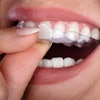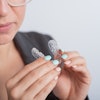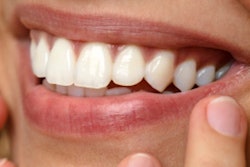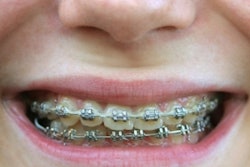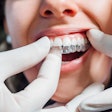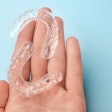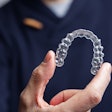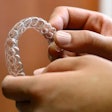
When patients visit orthodontists, they often seek much more than better smiles. Digital technologies such as 3D printing can provide patients with visuals that help them achieve more realistic expectations of their treatment and outcomes, according to a talk at the recent 2019 ADA FDI World Dental Congress in San Francisco.
"When I ask why they are here, they say they want straight teeth," said Lars Christensen, DDS, PhD, director of orthodontics at Lars Christensen Orthodontics in Oxford, U.K. "It's not the truth. There are deeper desires. They are hoping for more -- starring in the next blockbuster, finding a new partner, a new job. I try to help show them what I can do and the aim of orthodontic treatment, and what may be necessary afterward."
 Lars Christensen, DDS, PhD.
Lars Christensen, DDS, PhD.Digital technologies are not perfect, but they continue to improve. Dr. Christensen, who has used intraoral scanners since 2013 and a 3D printer since 2015, uses the datasets he receives from these technologies to do the following:
- Communicate about treatment planning with patients
- Have appliances made
- Review and track progress, and adjust goals and objectives when necessary
Study models provide very good information. An orthodontist can use a computer to show how a patient's teeth are expected to appear following a chosen treatment plan. Then, that image can be sent to the patient to review.
Measuring precision
Before investing in a printer, practitioners must ensure they are precise. Currently, not many printer models are available that print and measure precisely for orthodontics.
Instead of having a vendor send a printer, Dr. Christensen advises practices to request the company make a model of the orthodontist's teeth based on a scan. Then, the practitioner should make a retainer and see how it fits. In most cases, the retainer is too big, too small, or made to fit the top and not the bottom.
"In orthodontics, it's different," Dr. Christensen said. "Some printers can print models for three small crowns but not a whole arch with 12 teeth. For this, the printer has to be much more precise."
The pros and cons
No current evidence shows digital solutions result in shorter treatment times over conventional methods, but they do have other advantages, Dr. Christensen acknowledged.
Digital orthodontics cuts down on the number of appointments patients need. When using 3D models, Dr. Christensen said he does not place spacers between a patient's teeth, reducing the number of necessary appointments.
Also, appliances fit patients' teeth with "amazing" precision, and, therefore, spacers are unnecessary. Appliances are cast and designed to go over teeth and fit like a crown. They fit so well, cement isn't really required, he noted. However, due to the risk of tooth decay, cement still must be used.
Though digital orthodontics doesn't provide any overall time-saving benefits, but it can alter the way time is spent, Dr. Christensen said. He spends less time chairside with patients, which means appointments move along faster and more time in front of computers.
However, there are some disadvantages to working with this technology. Digital printing is more expensive than analog, and appliance costs are higher, Dr. Christensen noted. Also, new programs can be time-consuming to learn.
Practices also must be aware of the health and safety precautions that must be taken. Printers emit quite pungent vapors, so they should not be used or housed in small areas with little ventilation. Also, some materials become contaminated, so they must be disposed of as hazardous waste. This is more costly, he said.
After acknowledging that these new technologies are convenient, can assist with treatment planning, and offer better visuals for patients, Dr. Christensen asked, "Is digital orthodontics better?" His reply: "Yes, in many ways it is."

